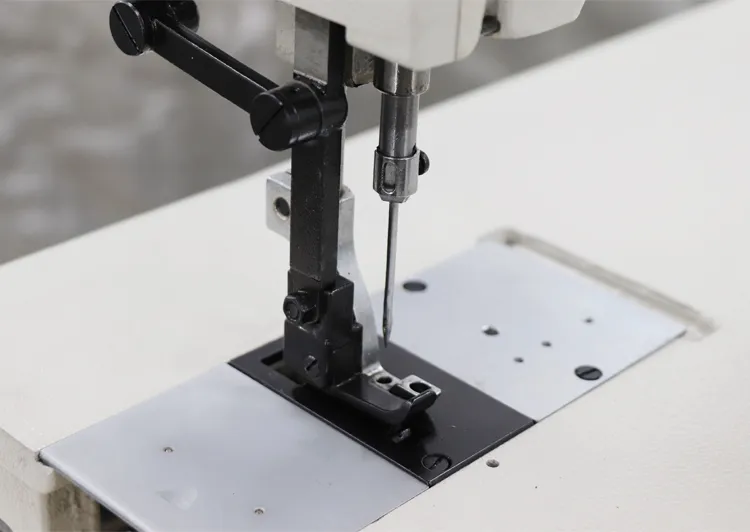Exploring the Versatility of Double Stitch Sewing Machines in Modern Fashion Design
Understanding the Double Stitch Machine A Key Tool in Modern Sewing
In the world of sewing and textile manufacturing, the double stitch machine stands out as an essential tool, offering both versatility and precision. This machine, which is designed to create two parallel rows of stitches, has become increasingly popular among both hobbyists and professionals for its ability to enhance the durability and aesthetic of sewn products.
What is a Double Stitch Machine?
A double stitch machine, often referred to as a twin needle sewing machine, is equipped with two needles that work simultaneously, creating two rows of stitches side by side. This design allows for the creation of decorative effects, as well as functional enhancements in garments and other textile goods. The machine can handle a variety of fabrics, including knits, wovens, and even heavier materials like denim, making it a versatile choice for a wide range of sewing projects.
Applications of the Double Stitch Machine
One of the primary applications of the double stitch machine is in garment construction
. The double stitching technique is commonly used in areas requiring extra strength, such as seams in jeans and sportswear. This added durability is crucial for products that undergo significant wear and tear, ensuring that they withstand the demands of everyday use.In addition to its strength, the visual appeal of double stitches cannot be overlooked. When used decoratively, the double stitch can add a professional touch to hems and embellishments, enhancing the overall aesthetic of a piece. This feature is particularly popular in the realms of fashion design and quilting, where creative expression is key.
double stitch machine

Advantages of Using a Double Stitch Machine
There are several advantages to using a double stitch machine in sewing projects. First and foremost is the increased strength of the seams produced. With two lines of stitching, the seams are less likely to fray or break, ensuring that the final product is both durable and reliable. This capability is especially important for items that are frequently laundered or subjected to stretching and pulling.
Another notable benefit is the efficiency it offers. The ability to sew two lines of stitches simultaneously significantly reduces the time required to complete a project. For professional seamstresses and tailors, this means higher productivity and the ability to take on more work without compromising quality.
Moreover, the double stitch can also enhance the overall appearance of the finished garment. The distinct rows of stitching create a polished look, making garments stand out in a crowded market. This finishing touch can be the key differentiator for designers looking to showcase their work.
Choosing the Right Double Stitch Machine
When selecting a double stitch machine, it is essential to consider several factors, including the type of projects you intend to pursue, your budget, and the machine’s features. Modern double stitch machines come with various options, such as adjustable stitch width and length, different needle types, and various presser feet. These features can significantly enhance the sewing experience and outcome.
In conclusion, the double stitch machine is a vital tool in both home sewing and professional textile production. With its ability to combine functionality with visual appeal, it caters to a diverse array of sewing needs. Whether you're a fashion designer looking to elevate your creations or a DIY enthusiast seeking quality results, mastering the double stitch machine can open up a world of creative possibilities. Investing in this machine is not just acquiring a tool; it's embracing a technique that enhances both strength and beauty in sewing.
-
Industrial Cylinder Arm Sewing Machine: Revolutionizing Heavy-Duty SewingNewsJul.28,2025
-
Cylinder Arm Sewing Machine: Perfect for Special Sewing ApplicationsNewsJul.28,2025
-
Cylinder Bed Sewing Machine: Essential for Sewing Complex MaterialsNewsJul.28,2025
-
Heavy Duty Sewing Machine: The Essential Tool for Industrial ApplicationsNewsJul.28,2025
-
Computerized Pattern Sewing Machine: Revolutionizing Precision StitchingNewsJul.28,2025
-
Heavy Duty Industrial Sewing Machine: Power Meets PrecisionNewsJul.28,2025
-
Leather Sewing Machine: The Industrial Standard for Tough MaterialsNewsJul.18,2025





























